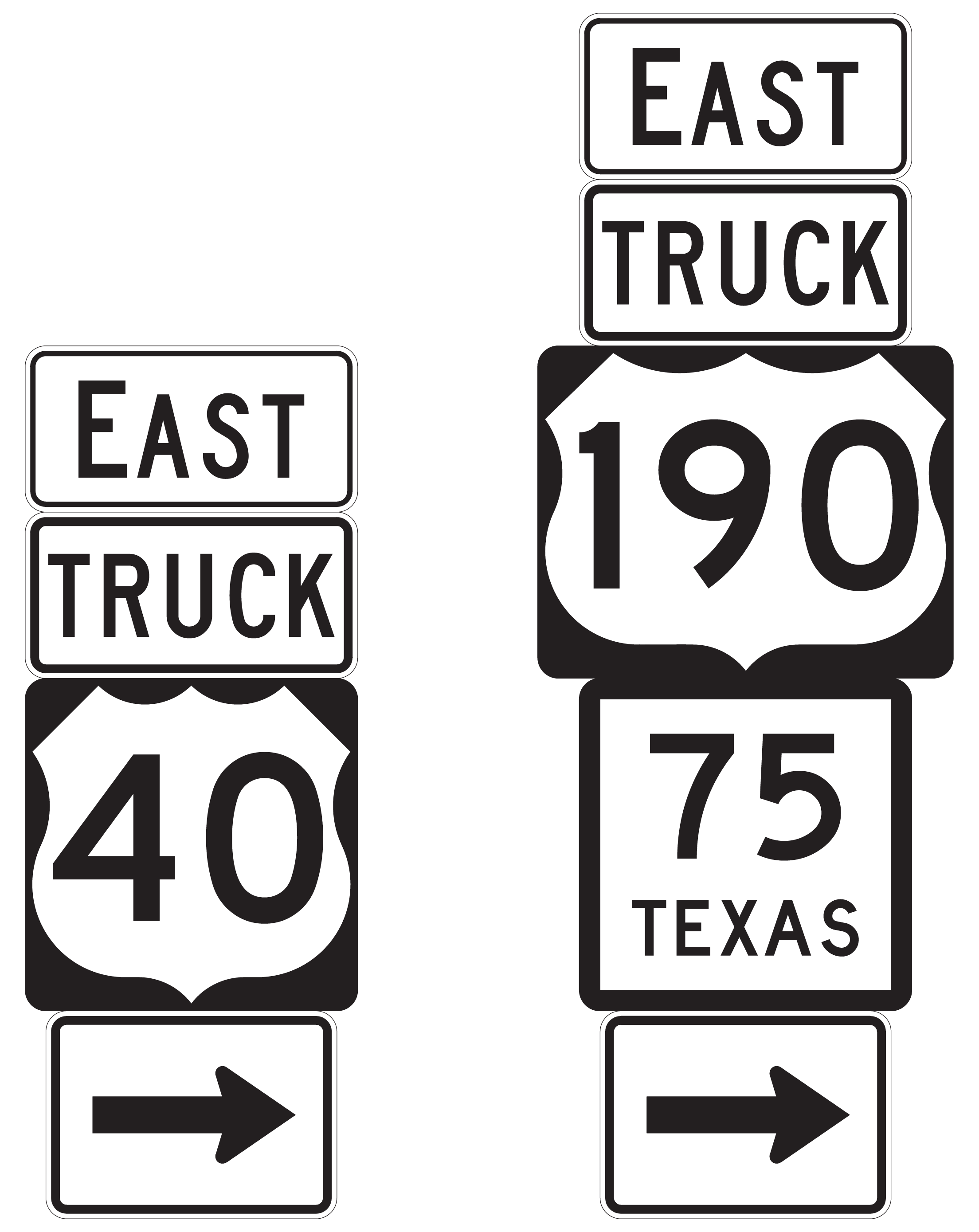Section 6: Truck Routes
Anchor: #i1008519Introduction
Local authorities may adopt traffic regulations controlling the movement of trucks on public roads within their jurisdiction consistent with state law.
Anchor: #i1008580Authority
By passage and enforcement of a city ordinance/resolution, a city may reroute trucks from a certain highway route within their corporate limits to an alternate highway route within their city limits.
The Texas Department of Transportation (TxDOT) has no legal authority to prohibit the use of any highway by any class of vehicle. In other words, TxDOT cannot discriminate between types of vehicles as long as they are within the weight and size limits established by law. TxDOT's authority is covered in the Texas Transportation Code, Chapter 201, Subchapter K, Section 201.901, "Prohibiting Use of Highway Road.”
Anchor: #i1008649Proposals
Cities should submit all proposals for re-routing on the state highway system in writing to the TxDOT district office for review and comment.
Anchor: #i1008706Route Guidelines
If an alternate route affects a county or another city, the city should obtain written consent from the affected county or city.
Weight and size carrying capability of the alternate route should be reasonably comparable. Also, the route should not be unreasonably longer than the original route. It should not be confusing to follow and should be selected so as not to jeopardize public safety. All truck routes should be on the State highway system.
The city assumes all responsibility for the route, including enforcement and any other legal matters.
Any route involving the Interstate System should be approved by the Federal Highway Administration (FHWA). The TxDOT Traffic Operations Division (TRF) coordinates the necessary approval with the FHWA.
Anchor: #i1008872Signing Guidelines
Proposed truck route signing should be adequate and in compliance with current signing practice. All signs required must conform to current standards as set out in the Texas Manual on Uniform Traffic Control Devices (TMUTCD) with regard to shape, size, color, letter size and style, mounting, location, etc.
The large and small advance TRUCK ROUTE sign assemblies may be used for additional emphasis of an existing or proposed truck route. See Figure 5-4 for an example of large advance truck route sign assembly.
Figure 5-4. Large Advanced Truck Route Sign Assembly sign details
Advance truck route sign assemblies are typically used to denote a truck route. See Figure 5-5 for an example of small advance truck route sign assembly.
Figure 5-5. Small Advance Truck Route Sign Assembly
The city must submit to the district office a suitable sign design detail drawn to scale showing the proposed sign shape, color, size, text and locations.
TxDOT installs all signs on expressways and freeways. Depending on the provisions of the municipal maintenance agreement, a city may be allowed to install signs on a conventional highway within its corporate limits. TxDOT installs signs on highways outside the corporate limits of a city as necessary to achieve a continuous connecting route.
The city bears all costs for signs and sign installations.
The TRUCK (M4-4) panel sign is not used in conjunction with an interstate route marker.
After the city passes the ordinance establishing the truck route, the district should provide a map that clearly defines the route to TRF.
Anchor: #i1009485Process Summary
The process of establishing a truck route is as follows:
- Anchor: #IHQPUFJJ
- City submits proposal for the truck route to TxDOT district. Anchor: #YCNIWUFG
- District reviews proposal and forwards it to TRF for review and comment. Anchor: #GXAKVFEA
- TRF reviews and comments on the proposal from an engineering standpoint (obtaining FHWA approval if necessary) and notifies the district. Anchor: #GMYUFRCF
- District notifies city of comments. Anchor: #SWQWTOMQ
- City passes ordinance establishing the truck route. Anchor: #BLJMKKBU
- Appropriate signs are installed to accommodate the truck route. Anchor: #XLQJCXPA
- District provides TRF with map clearly defining the truck route.
Restricted Truck Lanes
For information on restricted truck lanes, see Section 8 of this chapter.

